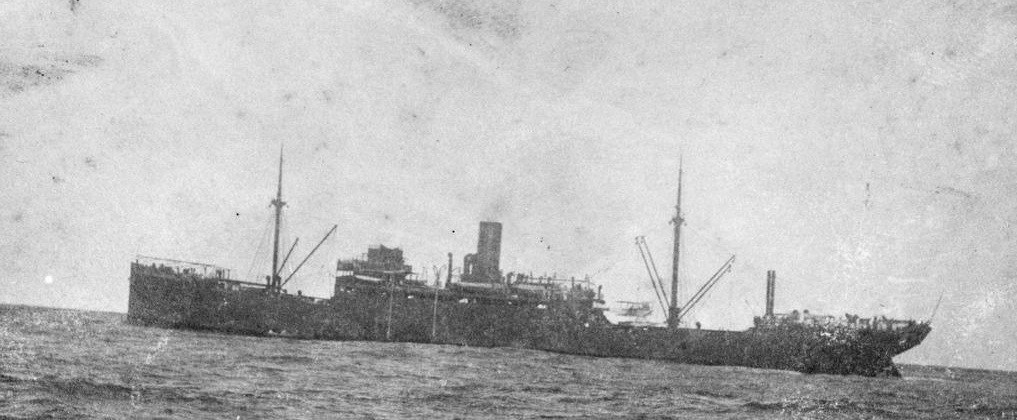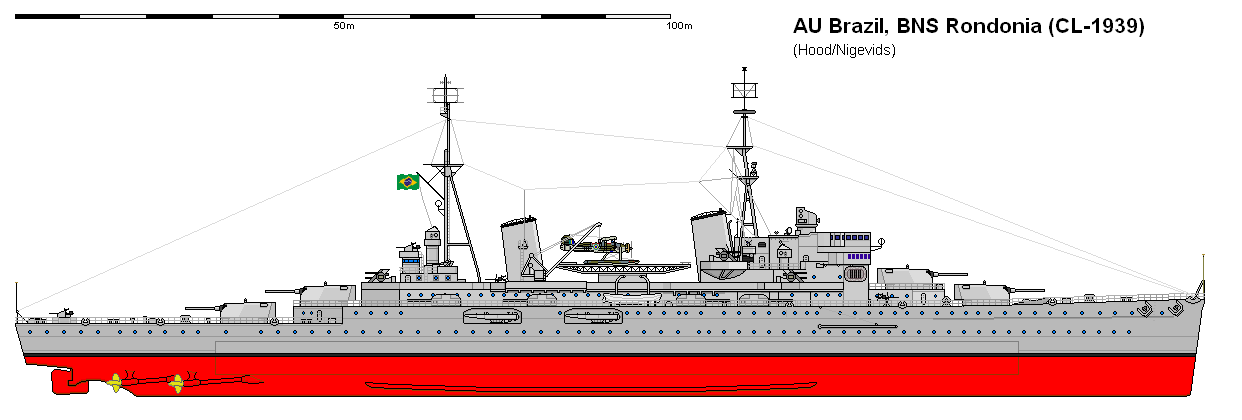While classed as light cruisers this is purely on gun size. Armed with 15 x 6 inch in 5 triple turrets, the sheer volume of fire would overwhelm ships. The Brazilians had these ships designed on the latest British cruiser which was the Edinburgh type and was supposed to be armed with quad 6" but as attested by Belfast sitting in the Thames it was completed with 4 triple turrets. The Brazilians decided that, as these cruisers were to be big, they wanted a five turret ship along the lines of the Brooklyn class cruisers. An enhanced Edinburgh class would meet that criteria.

The main upgrade for these ships during the war was the removal of the aircraft handling facilities and their replacement with more anti-aircraft weapons. Being completed in wartime, the ships benefited with a complete electronics suite. The first 40mm mountings were starting to be fitted and these replaced the quad 2 pounder pom poms, that had been in short supply. 20mm Oerlikon's replaced the Hispano-Suiza type.
The Rondonia had been completed without its 2 pounder pom pom mountings, they were in short supply and earmarked for the Royal Navies ships. A deal was brokered with the US Navy to have the Rondonia finished with the new quadruple 40mm that the US yards and armouries were now producing after receiving the plans for the Bofors guns from the Dutch. Nine mountings were placed where the 2 pounder would have been. It would not be for another 18 months for the Rondonia to receive radar predictors for these guns.
The Rondonia is now complete and heading for home to join the carrier fleet. Passing outside the Caribbean Island chain the Rondonia comes across a single merchant ship heading for the Leeward Islands passages. The Rondonia sends an interrogative searchlight signal "what ship?, where bound?". The answer received is sent off to the Central Merchant Authority which keeps track of all merchant ship movements. The answer is definitive - that is not the right ship. Another signal is sent "heave to, await boarding party". The raider Grief now knows the game is up and is now going to try to lure the Rondonia close enough to where its guns and torpedoes might have a chance of hitting. Further signals are exchanged as the Grief tries to close the range. The Captain on board Rondonia is smart enough not to fall into the trap the Grief is trying to set. His order is clear "B turret, three shells as close as you like." B turret fires and the shells land across the path of the Grief. A final signal "Surrender or be sunk!" is sent. The German Captain runs up the Germanic States flag, turns towards the Rondonia, drops the concealing panels, turns out its guns and opens fire. Short. The old World War One 5.9" can't reach. The Rondonia opens out its course to bring all guns to bear. "Shoot" says the Gunnery Commander, and away go the fifteen shells. Two hits. "Shoot." Another salvo on its way. Six hits. Two more salvoes and the Grief is a wreck. Those fifteen gun salvoes are killers. The Rondonia does not close the Grief as the flag is still flying. Some ardent Nazi might try and fire the torpedoes if the Rondonia comes close to rescue survivors. The Grief slowly sinks and the Rondonia's boats go in and rescue what survivors there are.

Medals all round for a job well done. The Brazilian Navy has played a large part in the war so far. Retaking the Falkland Islands. Sinking the Germanic States raiders that had been assisting Argentina. The Battle Stars for the Brazilian Fleet had come thick and fast. When Brazil asked for something like the 40mm guns for the Rondonia, the Allied countries gave assistance.
